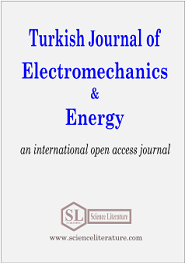İlgili ya da gönderen yazar makaleyi dergiye gönderir. Bu genellikle DergiPark çevrimiçi bir sistem aracılığıyla yapılır. Zaman zaman dergiler e-postayla gönderimleri kabul edebilir.
2. Yazı İşleri Değerlendirmesi
Dergi, gerekli bölümleri ve stilleri içerdiğinden emin olmak için makalenin kompozisyonunu ve düzenlemesini derginin Yazar Yönergeleri'ne göre kontrol eder. Makalenin kalitesi bu noktada değerlendirilmemektedir.
3. Genel Yayın Yönetmeni (GYY) tarafından yapılan değerlendirme
GYY makalenin dergi için uygun olup olmadığını ve yeterince orijinal ve ilginç olup olmadığını kontrol eder. Aksi takdirde, makale daha fazla incelenmeden reddedilebilir.
4. GYY Alan Editörü (AE) atar
Bazı dergilerde hakem değerlendirmesini yürüten Yardımcı Editörler vardır. Eğer ihtiyaç olursa, bu aşamada atanırlar.
5. Hakemlere Davet
Editör uygun hakem olduğuna inandığı kişilere davetiye gönderir. Yanıtlar alınırken, gerekli sayıda kabul elde edilene kadar gerekirse başka davetiyeler de verilir - bu genellikle 2'dir.
6. Davetiyelere Yanıt
Potansiyel Hakem, kendi uzmanlıklarına, çıkar çatışmalarına ve bulunabilirliklerine karşı daveti değerlendirir. Daha sonra kabul eder veya reddederler. Mümkünse, reddedildiklerinde alternatif yorumcular önerebilirler.
7. İnceleme Yapıldı
Hakem, makaleyi birkaç kez okumak için zamanı ayırır. İlk okuma, eserin ilk izlenimini oluşturmak için kullanılır. Bu aşamada büyük sorunlar bulunursa, gözden geçiren daha fazla çalışma yapmadan makaleyi reddetmek konusunda rahat hissedebilir. Aksi takdirde, ayrıntılı bir gözden geçirme oluşturmak için notlar alarak makaleyi birkaç kez daha okuyacaklardır. Daha sonra gözden geçirme, kabul veya reddetme önerisi ile ya da yeniden değerlendirilmeden önce revizyon talebiyle (genellikle büyük veya küçük olarak işaretlenir) dergiye gönderilir.
8. Dergi İncelemeleri Değerlendirir
İşleme editörü, genel bir karar vermeden önce geri gönderilen tüm incelemeleri dikkate alır. İncelemeler büyük farklılıklar gösteriyorsa, editör bir karar vermeden önce fazladan bir görüş almak için ek bir inceleme yapmayı davet edebilir.
9. Karar İletildi
Editör, ilgili yorumcu yorumlarını içeren bir karar e-postasını yazara gönderir. Yorumların anonim olup olmadığı derginin çalıştığı akran denetiminin türüne bağlı olacaktır.
------------------------English------------------
Peer Review Process - Peer Review Process
1. Abstract Submission
The relevant or sending author sends the article to the journal. This is usually done through a DergiPark online system. From time to time, journals may accept submissions by e-mail.
2. Editorial Assessment
The journal checks the composition and arrangement of the article against the journal's Author Guidelines to make sure it includes the required sections and styles. The quality of the article is not evaluated at this point.
3. Evaluation by the Editor-in-Chief (GYY)
GYY checks if the article is suitable for the journal and if it is original and interesting enough. Otherwise, the article may be rejected without further review.
4. Assigns GYY Area Editor (AE)
Some journals have Assistant Editors who carry out referee evaluation. If needed, they are appointed at this stage.
5. Invitation to Referees
The editor sends an invitation to anyone he believes to be suitable referees. When receiving responses, further invitations are provided, if necessary, until the required number of acceptances has been achieved - this is usually 2.
6. Response to Invitations
The Potential Reviewer considers the invitation against their expertise, conflicts of interest, and availability. They then accept or reject it. If possible, they can suggest alternative reviewers when they are rejected.
7. Inspection Done
The referee takes the time to read the article several times. First reading is used to create a first impression of the work. If major problems are found at this stage, the reviewer may feel comfortable rejecting the article without further study. Otherwise, they will read the article several more times, taking notes to create a detailed review. It is then submitted to the journal with a proposal for review, acceptance or rejection, or with a revision request (usually marked as major or minor) before being re-evaluated.
8.The Journal Evaluates Reviews
The processing editor considers all returned reviews before making a general decision. If reviews differ widely, the editor may invite you to do an additional review to get an extra opinion before making a decision.
9. Decision Delivered
The editor sends a decision email to the author with relevant reviewer comments. Whether comments are anonymous will depend on the type of peer review the journal is running.



 Indexed in:
Indexed in:














